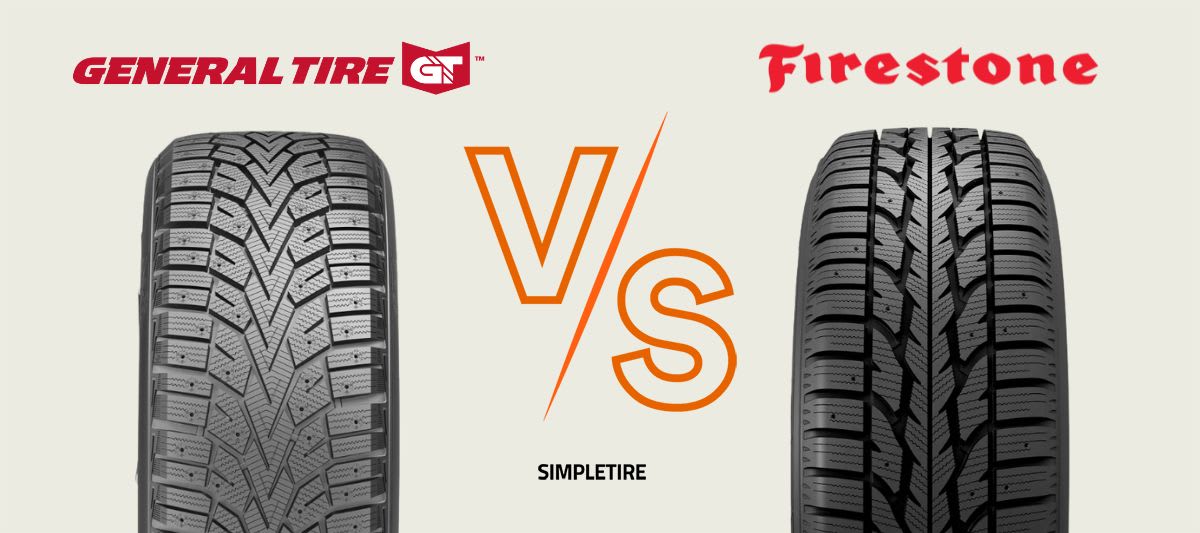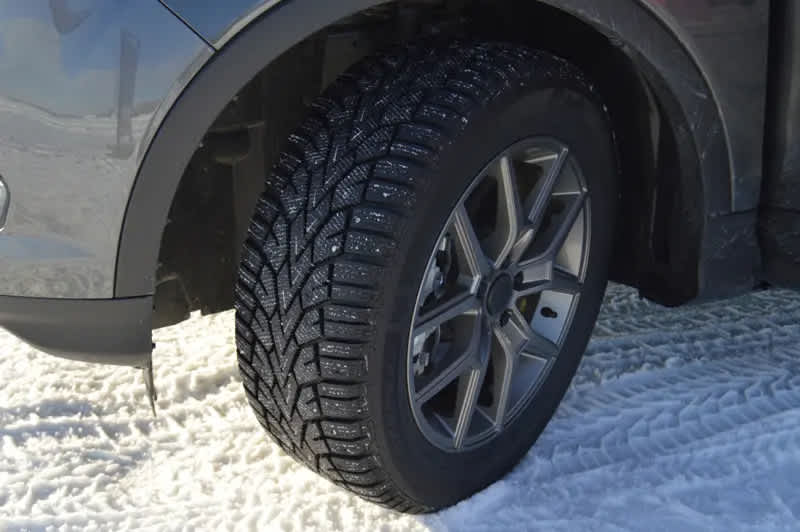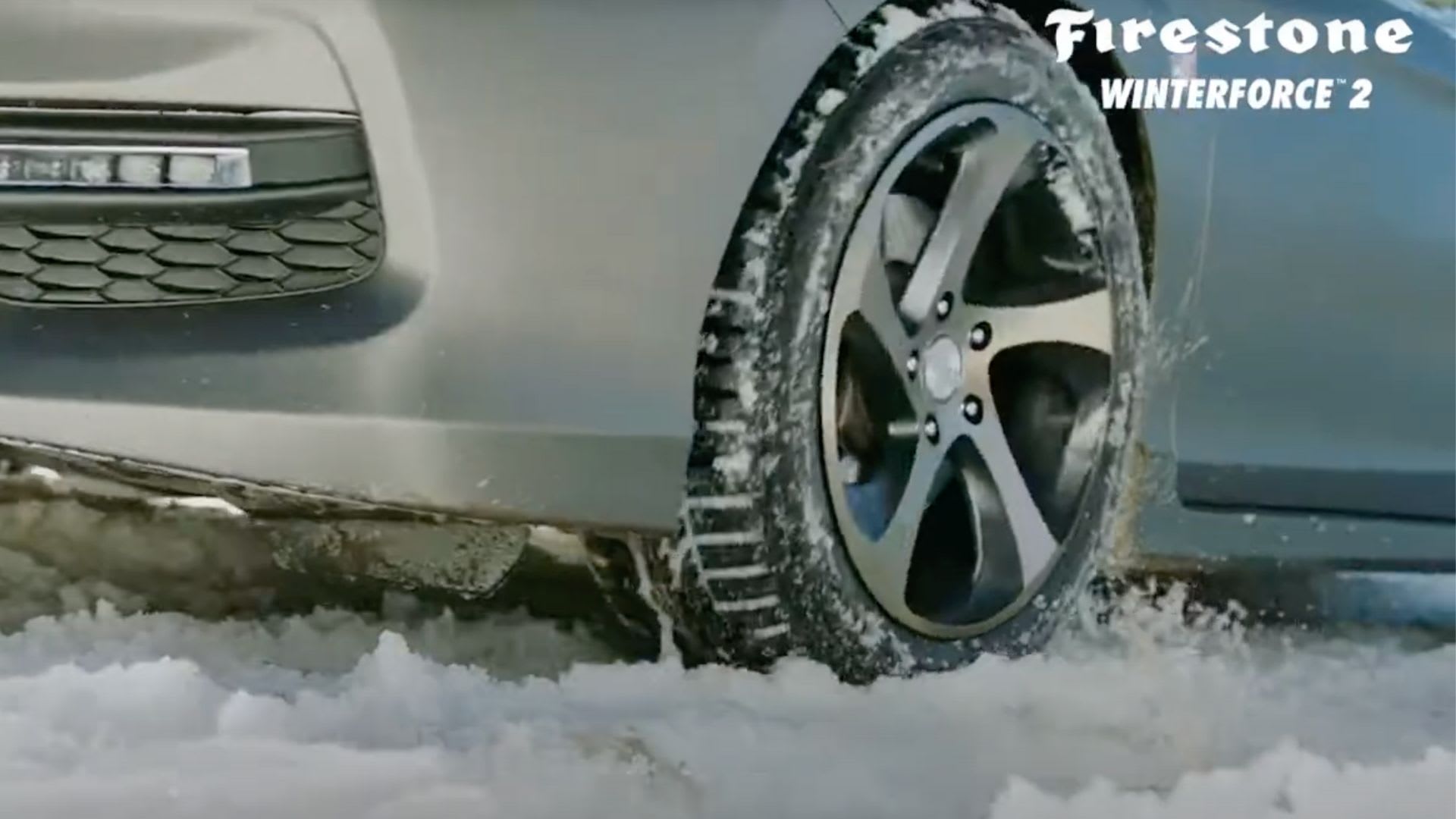Compare
Free shipping
Best price guarantee
Special pricing
Financing with Resolve
Easy returns

General is a renowned American tire manufacturer established in 1915 in Akron, Ohio. It offers tires for use on passenger cars, CUVs, SUVs, light trucks, Jeeps, commercial vehicles, and industrial applications. General popular product lines include Grabber, G-MAX, and AltiMax. The variety of tires offered by the tire brand includes all-season, all-weather, all-terrain, winter, UHP all-season, UHP summer, and mud-terrain.
On the other hand, Firestone is another popular tire manufacturer in the country with a long history, dating back to the 1900s. The tire maker offers various popular tire lines on the market, including Firehawk, Transforce, and Winterforce. Firestone tires can be used on various vehicle types, including passenger cars, light trucks, CUVs, SUVs, farm applications, OTRs, and commercial vehicles. The variety of tires offered by Firestone includes UHP summer, UHP all-season, all-season, winter, all-weather, all-terrain, rugged-terrain, mud-terrain, and performance tires.
The General Altimax Arctic 12 and the Firestone Winterforce 2 are the two highly capable winter tires suitable for use in winter weather conditions, in temperatures below 45 degrees Fahrenheit. They are good for use in sub-freezing temperatures and ensure confident driving on roads covered with thick layers of snow or ice. While the Altimax Arctic 12 is a studdable winter tire, suitable for use on passenger cars and CUVs, the Winterforce 2 features a studabble tread design with increased compatibility choices for sedans and minivans.
But which of the two tires is better when it comes to overall winter weather performance, traction, handling, and longevity? Let’s analyze both winter tires in this Altimax Arctic 12 vs Winterforce 2 comparison, using our proprietary tire rating system SimpleScore, where each tire is rated on a scale of 0-10 based on its overall performance, traction, handling, and longevity. Read on!
General Altimax Arctic 12 tires
The General Altimax Arctic 12 was launched in February 2017 and features a studdable winter tread pattern (the use of studs is subject to local laws). The tire is suitable for use on passenger cars and CUVs, and offers a reliable touring experience on snowy and icy roads during winter. It is Three Peak Mountain Snowflake certified for use in winter weather conditions and features many advanced technologies for an enhanced driving experience in sub-freezing conditions. You get a strong grip in low temperatures, superior braking performance, sharper handling response, and great control on snowy surfaces.
Overall, the Altimax Arctic 12 earns a great 8.5 SimpleScore because of its solid traction, dependable handling, and extended tread life.
Get General Altimax Arctic 12 tires at the best deals for your vehicle here
Firestone Winterforce 2 tires
The Firestone Winterforce 2, on the other hand, was launched in September 2017 and is also a credible winter tire, accredited with a Three Peak Mountain Snowflake certification. It is suitable for use on sedans, minivans, and other compatible vehicles and can be pinned with studs (wherever permitted by law). Firestone has specially optimized the tire for enhanced ride comfort, improved snow performance, and confident control on icy roads.
Overall, the Winterforce 2 is rated a great 8.3 SimpleScore, thanks to its long-lasting tread life, better handling response, and longer tread life.
Get Firestone Winterforce 2 tires at the best deals for your vehicle here
General Altimax Arctic 12 vs Firestone Winterforce 2 tires on traction

Let’s analyze both tires on the traction front and find out how they perform when it comes to surface biting on snowy and icy roads.
Let’s first talk about the Altimax Arctic 12, which scores a great 8.6 SimpleScore in traction. The tire is built using an innovative compound and advanced technologies that provide solid traction on wet, snowy, and icy roads. As mentioned above, the tire is severe snow-rated for confident use in winter conditions, and the tread can be pinned with TSMI #12 studs to gain extra traction and grip when driving over thick layers of snow or ice.
On the contrary, the Winterforce 2 scores an 8.5 in traction, marginally less than the peer, but good enough to offer a reliable performance in winter weather conditions. The special cold-weather compound, open shoulder slots, and optimized tread pattern improve grip in winter weather, whereas the full-depth tread additionally enhances the surface biting ability in winter weather. The Three Peak Mountain Snowflake certification additionally boosts the tire’s ability to maintain grip and flexibility in winter weather, while the studdable tread, which can be pinned with #11 studs, additionally improves traction and grip in winter weather.
In traction, both tires are great; however, the Altimax Arctic 12 earns an extra advantage of a better SimpleScore rating as well as slightly bigger studs, which contribute to better performance in extreme wintry conditions like deep snow and ice.
ADVANTAGE: General Altimax Arctic 12
General Altimax Arctic 12 vs Firestone Winterforce 2 tires on handling
Now, let’s take a look at the handling and overall controllability attributes of both tires and find out which tire is better when it comes to things like steering response, braking performance, stability, cornering, and ride control.
The Altimax Arctic 12 scores a great 8.3 SimpleScore in handling, ensuring better steering response and ride control in winter weather. The tread with detailed and multiple sipes boosts braking efficiency on wet, snowy, and icy roads, while the wider footprint improves steering response and dry handling. The optimized pattern, stiffer construction, and advanced rubber compound improve steering response, whereas the strong sidewalls and robust construction enhance cornering performance.
Comparatively, the Winterforce 2 scores a great 8.0 SimpleScore in handling, assuring dependable controllability, braking, and steering response. The ride comfort offered by the adaptive rubber compound and computer-tuned tread design is impressive, while the full-depth tread provides stronger surface holding for better ride control, braking, and confident cornering. Additionally, the contact patch is flat, and the base is wide enough to ensure improved stability in winter weather conditions.
Again, it is the Altimax Arctic 12 that leads with a higher SimpleScore and offers better handling performance.
ADVANTAGE: General Altimax Arctic 12
General Altimax Arctic 12 vs Firestone Winterforce 2 tires on longevity

Here, in this section, let’s take a look at the tread life abilities of these tires and find out which one is better at controlling the wear rate and lasting longer.
In longevity, the Altimax Arctic 12 earns an 8.6 SimpleScore, confirming that the tire is good enough to resist driving pressures and wear for extended use. The optimized pattern distributes the driving forces across the footprint for longer and even wear. The inner construction and the rubber compound are strong enough to keep the tire in shape and additionally contribute to even wear.
Comparatively, the Winterforce 2 secures an 8.6 SimpleScore in longevity. Its wider base and contact patch can resist uneven wear, and the adequately strong construction and robust rubber compound also control tread wear for long-lasting use. The shoulder blocks are strong enough to withstand the cornering pressures and maintain their original shape, preventing uneven wear.
Here, both tires score equally great, concluding in a tie.
ADVANTAGE: General Altimax Arctic 12
When to use each
The Altimax Arctic 12 and the Winterforce 2 are both studdable winter tires, and they are engineered for driving on snow and ice in extreme winter weather conditions. Consider using them when the temperatures are consistently below 45 degrees Fahrenheit. They are also Three Peak Mountain Snowflake certified, assuring their reliable performance in severe winter conditions. If you want to pin either of these tires with studs, please validate your local laws pertaining to the use of studs.
That being said, don’t use these tires for off-road purposes or in summer weather conditions, in temperatures above 45 degrees Fahrenheit.
Talking about rim sizes, both the Altimax Arctic 12 and the Winterforce 2 are available in 14- to 18-inch rim sizes.
Which one should you choose?

Based on the overall SimpleScore, the Altimax Arctic 12 is better than the Winterforce 2 (8.5 vs 8.3). However, they both come with their own unique attributes and strengths, and therefore, you must consider them based on your budget, brand preferences, and needs.
Coming to the prices, the Altimax Arctic 12 is available at a starting price of at least $107 per tire, while the Winterforce 2 is offered at an initial price of at least $112 per tire. This means that a set of four Altimax Arctic 12 tires will cost you at least $428, while a set of four Winterforce 2 tires is available at a starting price of at least $448.
Looking at SimpleScore, you should choose the General Altimax Arctic 12 if you:
- Drive a vehicle like the Mini Cooper Countryman, Toyota Camry, or Nissan Rogue.
- Need a tire that’s better in traction (8.6 vs 8.5).
- Want a tire that’s better in handling (8.3 vs 8.0).
- Need an overall better tire at a comparatively lower price.
On the other hand, you should consider the Firestone Winterforce 2 if you:
- Drive a vehicle like the Ford Fiesta or Chevrolet Traverse.
- Need a tire that’s equally good in longevity (8.6 vs 8.6).
- Are comfortable paying extra for a well-known winter tire.
Still not sure which tire to buy? Fortunately, SimpleTire is here to help as our helpful agents are more than happy to assist you in selecting the right tire for your ride and budget.
Ready to find the perfect tires?
Search By